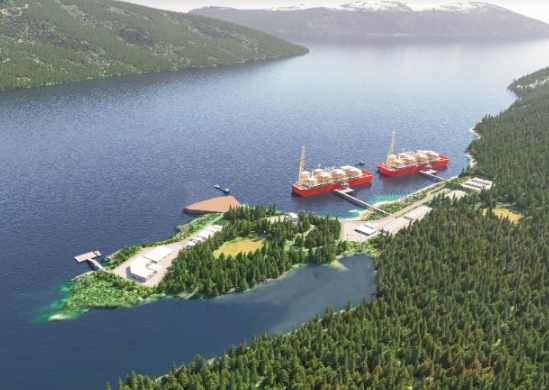
Ksi Lisims LNG concept
The certificate required significant construction progress by November 25, 2024. Following a detailed review process initiated by the EAO in late November 2024, the project met the necessary criteria. The EAO will continue to monitor compliance throughout construction and operation to ensure adherence to the certificate’s conditions.
Construction activities are set to ramp up in the coming weeks, including detailed surveys along the pipeline’s route. Western LNG highlighted that approximately $600 million has been invested in the project, with $25 million in 2024 directed toward Indigenous procurement and subcontracting, achieving a 30% Indigenous employment rate, significantly higher than the regional average for large projects.
Eva Clayton, President of Nisga’a Lisims Government, emphasized the project’s significance: “This project, and the Ksi Lisims LNG project, marks a turning point. For too long, Indigenous Nations have watched resource development happen around us, instead of with us. PRGT is different—it is Indigenous-owned, Indigenous-led, and grounded in a model of partnership that puts our communities at the centre of decision-making.”
The PRGT pipeline is part of a broader initiative linked to the Ksi Lisims LNG project, which has a planned capacity of 12 million tons per year from two floating LNG facilities powered by hydroelectricity. This design aims to minimize CO2 emissions, positioning it among the lowest-emitting LNG projects globally. The pipeline’s proposed route, amended in June 2024, would connect to the Ksi Lisims facility on Pearse Island, pending further environmental assessment.
Western LNG’s President, CEO, and Founder, Davis Thames, stated: “The PRGT and Ksi Lisims LNG projects will be an important source of new LNG supply as developing countries increase their electricity generation capacity. Supplying this growth with clean, responsible Canadian LNG will not only help those countries develop economically and reduce poverty but will also avoid significant carbon and methane emissions resulting from longer shipping routes and older technology.”
Engagement with Indigenous Nations will continue to refine project agreements and management plans. In early 2025, new equity funding was secured to support the Ksi Lisims LNG project through to a final investment decision, with commercial operations expected by late 2028 or 2029, pending regulatory approvals.